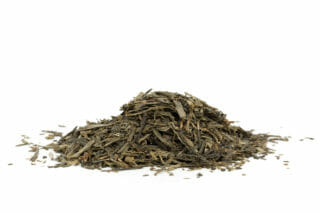 Yesterday, the Washington Post ran an illuminating and sad little story on government marijuana, which is pot grown under the oversight of the National Institute on Drug Abuse (NIDA). The government marijuana photographed and featured in the story is a sample distributed to a researcher for use in ongoing clinical studies for treatment of military veterans suffering from PTSD. The marijuana in question looks a lot like green tea: it is blanched and dry, stems and leaves. It does not resemble cannabis.
Yesterday, the Washington Post ran an illuminating and sad little story on government marijuana, which is pot grown under the oversight of the National Institute on Drug Abuse (NIDA). The government marijuana photographed and featured in the story is a sample distributed to a researcher for use in ongoing clinical studies for treatment of military veterans suffering from PTSD. The marijuana in question looks a lot like green tea: it is blanched and dry, stems and leaves. It does not resemble cannabis.
We have written before about the embarrassment that is our federal system for cannabis research. When the Drug Enforcement Agency (DEA), which oversees NIDA, says things like “[r]esearch is the bedrock of science, and we… support and promote legitimate research regarding marijuana and its constituent parts,” you must forgive the industry for rolling its eyes. The DEA clearly has no interest in studying anything that resembles the plant anyone actually ingests.
In addition to the dismal aesthetics of the government weed (reported to also lack smell), the WaPo story reports that the strain at issue tested out at 8% THC, which is less than half the average concentration found in commercial grade marijuana. The government weed also tests high in common contaminants, like yeast and mold, which would mandate its destruction in states with cannabis consumer safety laws (like Oregon, Washington or Colorado). In all respects, it would be difficult to mistake government cannabis for actual cannabis.
According to researchers, the quality of the NIDA cannabis makes highly controlled medical experiments next to impossible. One example of such an experiment includes the very experiment for which the cannabis was provided. After wending through a labyrinthian 7.5 year approval process and amassing a budget of $2,156,000 (based on a grant from the State of Colorado), it seems like a shameful waste of time and resources to test this “cannabis” on military veterans suffering from PTSD. If the government cannot grow real marijuana, it should at least know where to acquire it.
We have written before that given the lay of the land, it is up to states and private actors to take the lead on cannabis research – just as they have in all other aspects of ending prohibition. Constituent parts of the cannabis plant have real medical value, but they must be investigated properly to explore these promising features. Journalism like the WaPo piece, showing the NIDA shake, is helpful in pushing back on DEA claims that the law enforcement agency is a champion of science that “promotes legitimate research.” It does not. Really, the pictures say it all.























